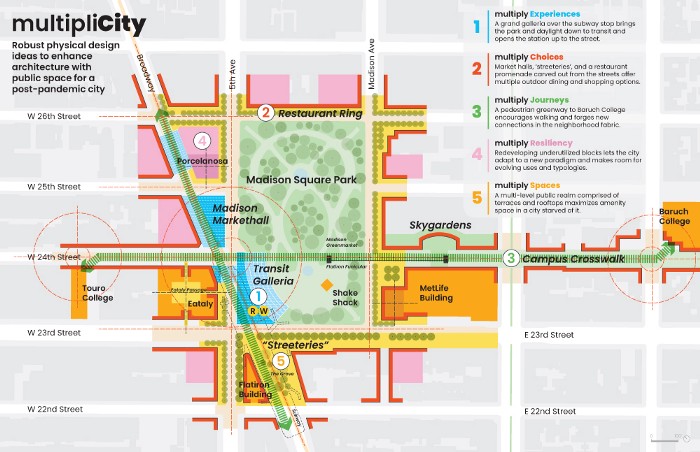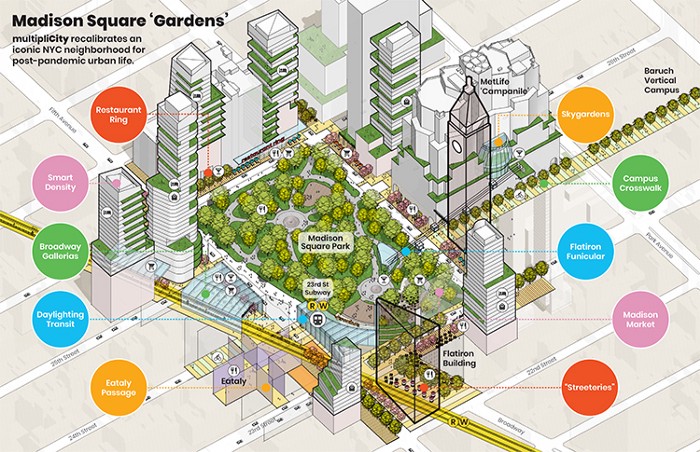
Map courtesy of Harvard Map Collection, Harvard Library
This proposal was submitted to the Urban Design Forum’s Gallery of Urban Ideas, a suite of creative reflections and proposals that will inspire New York City to work towards a safe, equitable, and dynamic recovery. Explore the proposal, within the gallery here.

With the rise of remote work and the fact that now, many of us have the flexibility to work from anywhere, what role does the city play? The pandemic has left us questioning density and considering alternatives. We live in a world with unprecedented choice. We have greater options for mobility and communication, we have advanced systems that enable us to work and play from anywhere. We have greater access to goods and services than ever before, all without having to leave our homes. The pandemic has further precipitated an acceleration of the infrastructures that make these choices possible. The world has changed, and technology has offered us the choice of whether we wish to return to the city. At a time when urban density is under assault, the model of the city will survive only if it accommodates, adapts, and most of all, delights.

The concept of multipliCity proposes robust physical design ideas for the city, where buildings and spaces are designed together to extend and enhance the life of the city.
In our proposal to Urban Design Forum, we apply this concept to a small microcosm of New York City, Madison Square ‘Gardens’, to showcase how:
- the city offers complete, safe, convenient, and one-of-a-kind experiences that are distinct and different from the suburbs
- the city builds resiliency, adaptability, redundancy, and flexibility into its fabric
- the city extends, enhances, enriches, and updates the public realm to reflect our new realities and lifestyles
- the city provides an architecture that delights and stimulates the soul
- the city unifies buildings and spaces into a cohesive urban realm for maximum impact
- the city designs and curates journeys that are as important as the destinations





